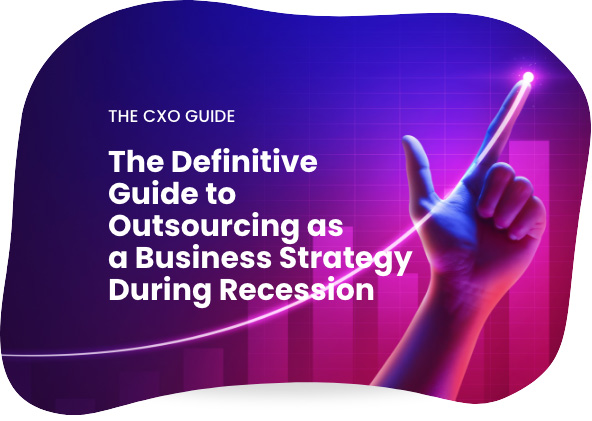Recession Guide for CS Leaders: How to Retain Customers During a Downturn

Key Takeaways:
- Brands must implement a seamless buying experience to make their customers come back, even during an economic crisis
- Repeat purchases are the ideal way to keep your business healthy and running during an economic downturn
- Customers who are happy with your product/services tend to refer their friends to your brand
- Retaining your existing customers will help you grow your business amidst the challenges other companies are experiencing
Economic downturns or recessions can significantly impact customer behaviour and your organisation’s approach to retaining customers.
As a CS leader, you must keep your team productive, motivated, and efficient during challenging economic times to retain your customers.
Customer success has never been more vital than it is right now, but instead of concentrating on KPIs and analytics, it’s crucial to pay attention to the customer.
By focusing on customer outcomes, an organisation’s current goal should be to make their customers’ lives easier while they use the product or service. Hopefully, the customer will benefit from this and continue doing business with you through challenging times.
This article will discuss why customer retention should become your number one focus and how to retain customers in an economic downturn.
The 5 Effective Strategies for Fostering a Loyal Customer Base
Even when things are going well with the global economy, retaining customers is difficult and building a loyal customer base is an ongoing effort. Making client retention marketing a priority requires hard work, even in the best times.
However, when a recession occurs, things become even more difficult.
People make fewer purchases, spend less, and forego some of their preferred brands to conserve money. You might think, “How can I hope to retain my customers in the current climate?”
Fortunately, many strategies are still available to help create a solid consumer base, even during a downturn. A few of them are presented below.
1. Put Customer Experience First
According to PWC, only 49% of consumers believe that businesses offer good customer service options, while 73% think customer service experience pre-purchase is a crucial determinant of their purchase decision.
This indicates that you can quickly establish a loyal customer base if you can set yourself apart from your rivals in terms of customer service.
Providing a positive and personalised customer experience, especially during a recession, is everything when it comes to running a successful business.
You must ensure that you provide quality products and services, deliver them on time, and respond quickly to customer inquiries and complaints. By doing so, you will be able to keep your customers happy and coming back for more.
To ensure that you are providing the best possible customer experience, it is essential to strive for improvement constantly. This means continually evaluating your procedures and removing inefficiencies where necessary. And removing inefficiencies that are affecting the CSAT score, NPS, or LTV.
It is also important to listen to your customers and consider their feedback. By doing all of this, you can be sure that you are providing the best possible customer experience and running a successful business.
2. Be Flexible
Be flexible with your customers.
If they can’t pay their bill on time, offer them a payment plan. If they’re unhappy with a purchase, offer them a refund or exchange.
Being flexible with your customers shows that you’re willing to work with them to ensure they’re satisfied. This can help build long-term loyalty, and trust and boost sales from existing customers.
Customers feel appreciated when companies are ready to look out for them in times of need. Offer discounts and incentives when possible. When people spend less money on goods and services, they start looking for ways to save money elsewhere.
Offering discounts or incentives may result in increased sales at times when your company cannot afford to lose money from sales volume alone.
3. Have a Community-Oriented Perspective
During times of global disruption, people seek a community to belong to and connect with.
Start developing meaningful connections with your existing customers to strengthen the relationship. Once you build a customer community, it will continue working for your business, even when you are not trying hard.
Building trusting relationships with your customers will cost you nothing, and the payoff is immeasurable. Make direct contact with your clients and express gratitude, making them feel they are being seen and heard.
Creating a community around your company, however, can be tricky.
You can use community-building platforms and social media to build the community and offer loyalty programs or referral discounts to grow your business.
4. Be Compassionate
In the same way that individuals seek out the community during a turbulent time, they also seek a little compassion and recognition. This can be accomplished through personalisation – personalising your approach for each customer can make them feel valued.
When done well, personalised customer service may increase retention, foster customer loyalty and trust, reduce churn rates, and support the maintenance of a solid client base.
According to Hubspot, personalised CTAs outperform non-personalised CTAs by more than 200%, and most customers are more likely to continue with a business that provides a personalised experience.
Valuing your clients is a successful business strategy, especially when they are concerned about their expenses. You do not want your customers to stop doing business with you because they feel you don’t care about them.
5. Add Value to your Product/Service
The easiest way to retain customers is by bringing value to your customers. Be proactive with the value propositions the business has to offer.
You can add value to your business with a single offer, but adding value as part of a series is much more effective. Here are some examples:
1) Add a bonus product or service at the same price point and let customers know about it. This can be a free report, video or guide, or even an additional product at the same price.
It helps create loyalty by giving customers something extra for free, showing that you’re willing to go above and beyond for them.
2) Improve customer service by walking them through processes that may not have been explained well before (or at all!) so that people know what’s expected of them when using your product or service.
This can be done in person or via email – just ensure that customers know what’s happening behind the scenes!
3) You should also improve the quality and performance of your products/services to help retain loyal customers who may not expect much from you but appreciate quality when delivered consistently.
To Summarise
Driving customer loyalty in a challenging economic climate is key to increasing your business growth, and convenience is the key to gaining trust and loyalty from your customers in these times.
The above-mentioned strategies can help you achieve what you want and unlock huge benefits during a recession.
Outsourcing certain functions, such as sales pipeline management or customer support, can also help your organisation take better care of your customers and become a boon for cost-conscious companies.
Using outsourcing as an intelligent business strategy can improve retention and position the organisation to meet the challenges imposed by a recession favourably.
In this context, we bring to you a definitive guide compiled by our experts which dives into every aspect of sales outsourcing as a smart business strategy during a recession. From understanding how it can help meet your business demands to choosing the right outsourcing partner – we discuss it all.





